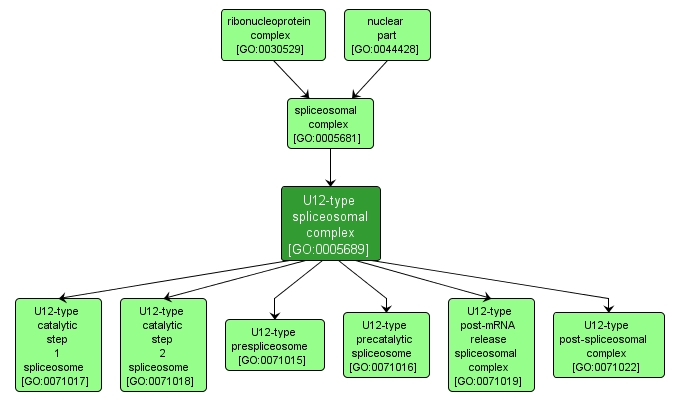| Desc: |
Any spliceosomal complex that forms during the splicing of a messenger RNA primary transcript to excise an intron; the series of U12-type spliceosomal complexes is involved in the splicing of the majority of introns that contain atypical AT-AC terminal dinucleotides, as well as other non-canonical introns. The entire splice site signal, not just the terminal dinucleotides, is involved in determining which spliceosome utilizes the site. |














